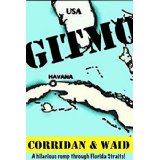I just finished a mystery/thriller by a New York Times bestselling author, someone whom I’ve read sporadically over the years, usually quite happily. This particular book is set in the 1980s but was published not long ago, so it’s not one of the author’s early works. Yet reading it was a slog when her technique and years of writing experience should have made it a slam-dunk.
someone whom I’ve read sporadically over the years, usually quite happily. This particular book is set in the 1980s but was published not long ago, so it’s not one of the author’s early works. Yet reading it was a slog when her technique and years of writing experience should have made it a slam-dunk.
We all know the phenomenon that happens when a book is truly good — time is suspended as we enter the magical world of another person’s imagination.

Conceptual Books
We experience good writing on our most visceral level, all senses at full-throttle, our grey-matter molecules beamed directly into the author’s creation. For me at least, time flies by so quickly that analysis isn’t possible, not until I take up the novel a second or even a third time.
But when a book is disappointing, I immediately tackle it on a more intellectual plane, looking at it this way and that, mentally adding and subtracting elements that can either make or break a great read.
Examining the bad for hours on end but zooming through the good? Yes, it’s a formula that seems totally out of whack. In my defense, wonderful writing sticks to me, as it does to most wordsmiths. On the other hand, after I’ve analyzed the bad stuff up one side and down the other, it steals out of my memory and I eventually forget everything about it, name included. So, what did I get out of the best-seller I just finished? An what went so wrong that it became a chore to read through it?
So, what did I get out of the best-seller I just finished? An what went so wrong that it became a chore to read through it?
First off, this was not a Turow type noveI, so there were no deep, byzantine currents swirling around. Most of my time was spent thinking about Plot, Characters, and Setting, all along very fundamental lines. For all three, I had a short and non-demanding laundry list of expectations. Here it is with my quick marks:
 I really didn’t think I was asking too much, was I? In any event, here’s the explanation of my scores:
I really didn’t think I was asking too much, was I? In any event, here’s the explanation of my scores:
PLOT(noun) To Which I say PLOT! (verb)
Or in other words, it bordered on the tedious and was, with a few exceptions, ploddingly predictable. Definitely not bestseller quality.
That dynamite beginning? If the book hadn’t been by a Very Well Known Author, I would have quit after a few pages. Reputation and previous experiences with this author’s books compelled me to keep reading when the words didn’t.
There were negligible hooks at chapter ends, something that really bothered me. Maybe I’m spoiled. As a big fan of Dick Francis, I’ll admit to having analyzed every one of his 40 novels — in an earlier life. Today, I would enjoy and consume as rapidly as I could. (A factor of age perhaps?)
As a big fan of Dick Francis, I’ll admit to having analyzed every one of his 40 novels — in an earlier life. Today, I would enjoy and consume as rapidly as I could. (A factor of age perhaps?)
Anyway, Mr. Francis is a master at ending chapters with lots of shivers and rising expectations. One of my favorites is in COME TO GRIEF, where a series of bizarre horse mutilations has been unnerving the local equestrian community:
“In the days that followed, interest and expectation dimmed and died. It was twelve days after the Derby, on the last night of the Royal Ascot meeting, that the screaming heebie-jeebies re-awoke.”
If I’d written this passage, I’d be dining out on it for years.
Alas, my mystery/thriller had nothing in this league.
The scenes were okay, in the way of vanilla pudding, just tasty enough that you continue to eat it but nothing to get excited about. And I wanted to get excited. After all, this was supposedly a thriller.
But a big structural problem, which I put down to both missing chapters and missing character development, came with the insertion of a central character whose life was in the hands of the antagonist, a truly wicked man. This character was a kidnap victim subjected to all kinds of devious, nasty torture; she was also trying to escape the villain’s clutches. (Good Thinking!) Despite this incredibly important role, she appeared in only three or four chapters, almost as after-thoughts.
This character was a kidnap victim subjected to all kinds of devious, nasty torture; she was also trying to escape the villain’s clutches. (Good Thinking!) Despite this incredibly important role, she appeared in only three or four chapters, almost as after-thoughts.
Her struggle should have been a taut, eventful, thrilling, and suspenseful story line, but since she was only a shadow of the personality she could have been with stronger characterization and plotting, the story line itself was impossible to pull off.
MORE CHARACTERS — MORE PROBLEMS

Basic genetic material.
With a couple of exceptions, the remaining characters played out like fragile strands of DNA that refused to coil. Because I was looking for each personality to be special and memorable. I found myself urging on the characters throughout the book, trying to endow them with more than the author herself was contributing. The problem wasn’t that she failed to provide the basic genetic material — there were descriptions galore. And there was lots of showing as well as telling. But most of the time it just didn’t add up to a complete double helix.

The Real Thing, courtesy of http://www.riaus.org.au
The villain was a pleasant family man whose evil side was rarely depicted and never connected back to the nice guy we kept meeting page after page. His raison d’être for being so awful was (deep breath now) an awful wife.
The female protagonist was an icky sweet school teacher. I mean really.
I loved the male protagonist — but then I always fall for the tall, dark, handsome guy, no matter how often I read about him. I actually started to buckle under for two of them as the author couldn’t make up her mind who was the lead dog, another character problem.
The children were more rounded, though they were overly simplistic and bordered on trite. A beautifully drawn child character is a gift indeed. But not here.
The gay friend was a gay friend, down to the pink shirt. And so on.
Characters who were better molded were made so by lines like this:
“Some days he found himself to be lacking impulse control, but whether that was damage to the frontal lobe or the result of fully realizing his own mortality, he couldn’t say. He was a walking, talking second chance. He had no interest in passing up experiences or putting opportunities off to a tomorrow that might never come.”
And this:
“He gave her half a smile. ‘Yeah. I’ve been experienced right out of normal thinking. I’ve spent a long time studying murderers and trying to figure out how they got that way and what makes them tick.’”
And this:
“’You should be dead.’
‘Yeah. But I’m not,’ he said with a shadow of the big white grin. ‘Life’s a funny old dog. Don’t take it for granted, kid.’”
All these quotes go to one character, the protagonist (sort of), the best developed of the bunch.
 Now, contrast that with another book, a quirky thriller called GITMO that introduces the main character this way:
Now, contrast that with another book, a quirky thriller called GITMO that introduces the main character this way:
“Dixon Sweeney shaded his eyes and looked at a cloud, a little puffy thing hanging on the horizon. Maybe it was a sign, a memory moment of his first free breath in eight years. He picked up his cardboard box with the duct tape handle, all his possessions, and walked down the three concrete steps and out into the early-morning heat that dampened his body and stained the pits of his Goodwill suit.”
And this:
“The heat was overpowering and the mosquitoes were a torrent by the time the bus stopped in an open swale of dirt commonly used by protesters who gathered for executions. Sweeney picked up his box and climbed aboard. There were only a few riders, but he sat in the back, as far from anyone as he could. The free noises frightened him. Conversations confused him. Colors blinded him. And making any kind of decision was impossible. So he sat by the latrine and endured the stink and watched the miles roll by.”
And, later on, this:
“But Dixon Sweeny wasn’t about to be discouraged. In fact, he started dancing.
“He moon walked and he shouted and he threw his box of taffy high in the air. And even when the rain turned his black prison brogans into slapping seal feet, and even when all that water whipped the sandy berm into mush, he didn’t let up. He’d been gone so long, damn near a decade, and he missed his home and his wife and he jumped up and around like an idiot, in the rain, in the mud, in the dumb seersucker suit that was given to him as a guard joke that the mail room guys do to you. And he missed his wife, and his people and his house, and his wife…
“The rain shut down like a faucet, which made Sweeney stop, dizzy with exertion.
“He blinked. Across the street there was a brace of palm trees and a sandy trail. Beyond, through a cluster of sea oats, there was a glimpse of blue.
“He started running, kicking off his shoes, ducking under his string tie, yanking away his coat, ripping through his pajama-top shirt, tossing everything aside. He began hopping on one foot at the water’s edge, finally falling and rolling as the double-pleated seersucker pants split over his toes and his underwear disintegrated. He ran headlong into the sea, naked as a jaybird, babbling incoherently about his true love, his baby, the love of his life, a presence since he was born that had been denied too long—the sea.”
I almost don’t care what happens next – I’m just in love with Dixon Sweeny and his new love of life.
But I have to admit I was glad I read along to this gem:
“’What’s that?’
“’What’s it look like?’
“’Well, it looks like a Daisy, Spittin Image Peace Maker BB gun.’

“’Damn straight,’ she replied.
“’Miss Mazie, you wouldn’t shoot me. I’ve known you since I was yea big.’ He held his palm down by his knees.
‘’Thanks for reminding me,’ she said. Then she shot him in the dick.”

Lovely expansion of the Philadelphia Free Library. The Library’s extensive e-service is a boon to overseas Americans as well as those living in rural America.
GITMO is the product of the writing team of Shawn Corridan and Gary Wald and is available free if you have a Philadelphia Free Library subscription (which isn’t free — go figure — but is a nice subscription service to have just the same).
Getting back to this not terribly successful mystery/thriller, the rising action needed more yeast, the unsagging middle could have done with some support, and the strong, believable ending wasn’t. You saw it coming a mile away and it left with loose ends galore.
Which allows me to move on to SETTING.
The author chose to put the story in the 1980s, which intrigued me as I was actually alive during that time – and can remember it to boot. There was lots going on in the ’80s.

Courtesy Occupy.org
But beyond referencing “The Cosby Show” over and over and mentioning that profiling was in its infancy, the author’s version of the era was left largely undated by events, wardrobe or even technology. Granted, it’s hard to say there were no GPSes when in fact there were no GPSes, although the author did hint about DNA and fingerprint analyses that were on the horizon. Still, more than the mention of a hairstyle, TV show, or what might be happening down the road is needed to totally ground you in place and time, and failure to do that can affect the entire book. As per one of Randy Ingermanson’s best sayings: “Sell the World, Sell the Story.” Or, in this case, don’t — and don’t.
A nice succinct example of establishing setting can be found in KEY WITNESS by J. F. Freedman, when the protagonist, a high-powered lawyer who’s volunteered to work as a public defender for a year, surveys his office:

Muskegon County Public Defender’s Office
“THE DAILY END-OF-THE-DAY summing-up and plotting out the next day’s work took place in Wyatt’s cramped, gothic-feeling office. The Hunchback of Notre Dame would feel at home here, he thought—but he had come to like it. He wasn’t so romantic about the situation to want to work out of these kinds of digs for the rest of his life; but for now, with this case, this was the right place to be. These were underdog offices. You didn’t entertain here, you didn’t impress, you didn’t schmooze. You brought your lunch pail to work and you did your job.”
A great lesson can also be learned from historical fiction, where the author must walk a fine line between assuming what the reader knows intuitively and through his/her general learning, and what must be explained. Here’s a great example of that in TAKE, BURN OR DESTROY by S. Thomas Russell:
 “The bump and screech of gunports hinging up stole a little of Hayden’s breath. Apprehending the gunports opening, the French officers turned to shout the alarm, but their calls were lost in the shattering report of British eighteen-pounders. There was no reply from the Frenchman. Musket fire cracked from the tops as Hawthorne’s marines began firing at the men scurrying about the enemy’s deck.
“The bump and screech of gunports hinging up stole a little of Hayden’s breath. Apprehending the gunports opening, the French officers turned to shout the alarm, but their calls were lost in the shattering report of British eighteen-pounders. There was no reply from the Frenchman. Musket fire cracked from the tops as Hawthorne’s marines began firing at the men scurrying about the enemy’s deck.
“Immediately, to both left and right, the gun crews went coolly about reloading their carronades. Many were seasoned hands at this now, after their convoy to the Mediterranean. There was no hesitation or confusion, but only a well-greased axle, turning with precision and regularity. The balls and wadding were pushed in together. At the same time, the gun captain uncovered his lock, ran his pricker into the touch-hole, poured a measure into the pan, closed the lock, and pulled back the cock with two thumbs. The carronades were run out on wooden slides, and the gun captain made certain of his target and yanked the firing lanyard with a quick jerk.
“Hayden had stepped back from the rail, turned away, and covered his ears just in time. A tremendous explosion tore open the darkness, with the muzzle flash, and smoke plumed forth, blossoming up into a weeping night.”
Through this description, Mr. Russell not only sold me on the world but also involved me just a little more in the intricacies of his story.
Returning to the bestseller, it turned into a good learning experience at the end, but was also a genuine disappointment. No one, with the exception of students, perhaps, wants to read a bad book. And this was truly a bad book. With three strikes against it in Plot, Characters and Setting, crafting a successful story with the remaining elements would have been a tough go for anyone. Yet I admit to an element of reading to see if the chestnut could be pulled from the fire despite all the negatives. Every now and then it happens. Sadly, this now and then, it didn’t.
Til next time,
~~Britt Vasarhelyi





 Cyberdyke is a computer professional from the Pacific Northwest. She has worked for companies such as Intel, Hewlett-Packard, and McAfee. As a child, she wasn’t finding any books that appealed to her, so she began writing her own stories. www.cyberdyke.biz
Cyberdyke is a computer professional from the Pacific Northwest. She has worked for companies such as Intel, Hewlett-Packard, and McAfee. As a child, she wasn’t finding any books that appealed to her, so she began writing her own stories. www.cyberdyke.biz












![images[6]](http://web.archive.org./web/20170612091759im_/http://mostlymystery.com/wp/wp-content/uploads/2015/08/images6.jpg)
![screenshot1[1]](http://web.archive.org./web/20170612091759im_/http://mostlymystery.com/wp/wp-content/uploads/2015/08/screenshot11-300x225.png)

















